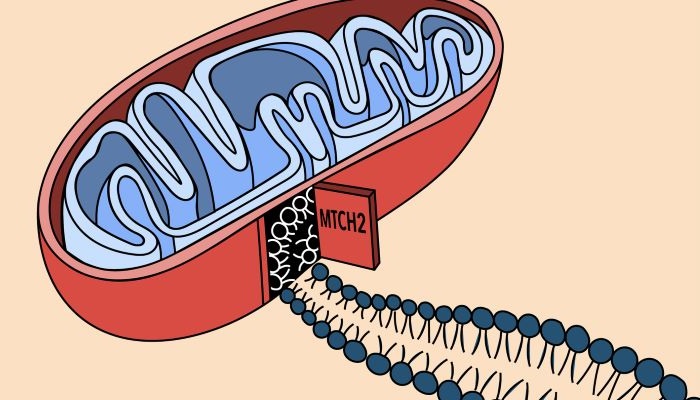Education
How A Small Protein Plays A Large Role In Mitochondrial Function

Caltech researchers have discovered an unexpected role for a protein in human cells, solving a longstanding mystery about how the composition of mitochondrial membranes is regulated.
Multiple studies have previously shown that mutations in the protein MTCH2 are associated with a wide range of disorders such as Alzheimer’s disease, Parkinson’s disease, and leukemia, but it has been unclear what exactly MTCH2 was doing to have such a major effect on the cell’s function. This new work shows that MTCH2 is critical for the construction of a cell’s mitochondria, specifically for carefully inserting proteins into the mitochondrial outer membrane.
The research was conducted in the laboratory of Rebecca Voorhees, assistant professor of biology and biological engineering and a Heritage Medical Research Institute Investigator, and was a close collaboration with the laboratory of Jonathan Weissman at the Whitehead Institute at MIT. A paper describing the study appears in the journal Science on October 21.
A mitochondria is an organelle within a cell that produces energy and acts as a cellular signaling hub. The outer membrane of the mitochondria facilitates multiple processes, such as helping the cell recognize pathogens, initiating a self-destruct process called apoptosis, and the breakdown of brain signaling molecules such as dopamine.
The outer membrane is embedded with hundreds of proteins, each inserted into the membrane in a precise orientation. If these proteins are not successfully inserted, the mitochondria are unable to function properly, leading to a wide range of disorders. One class of proteins, known as alpha-helical proteins, represent more than 90 percent of the different types of proteins in the mitochondrial outer membrane. Despite their importance, the way in which they get inserted into the membrane has long puzzled researchers.
The new research from the Voorhees and Weissman laboratories determines that a protein—MTCH2—is responsible for inserting alpha-helical proteins into the mitochondrial outer membrane in their correct orientation. The team discovered MTCH2’s role by conducting a massive screen of genes in human cells. The researchers then used a wide range of different experiments to show that MTCH2 is both necessary and sufficient to carry out the insertion process.
The paper is titled “MTCH2 is a mitochondrial outer membrane protein insertase.” The study’s three co-first authors are postdoctoral scholar Alina Guna, graduate student Taylor Stevens, and postdoctoral scholar Alison Inglis, all from Caltech. In addition to Guna, Stevens, Inglis, Weissman and Voorhees, additional coauthors are Joseph Replogle of the Whitehead Institute and UC San Francisco; Theodore Esantsi, Gayathri Muthukumar, Angela Pogson of Whitehead; Caltech graduate students Kelly Shaffer and Maxine Wang; Caltech senior scientist Jeff Jones; former Caltech staff scientist Brett Lomenick and Caltech Research Professor of Biology and Biological Engineering Tsui-Fen Chou. Funding was provided by the Howard Hughes Medical Institute, the Human Frontier Science Program, the Heritage Medical Research Institute, the Larry L. Hillblom Foundation, and the National Institutes of Health.
Source – Caltech
-

 Auto2 years ago
Auto2 years agoHonda Marine Debuts All-New BF350 Outboard Company’s First V8 Motor Available Commercially, Flagship Model Offers Premium Power and Unparalleled Performance for Extraordinary Boating Experiences
-

 Auto2 years ago
Auto2 years agoNew Features Further Increase Desirability Of Bentayga Range
-

 Technology2 years ago
Technology2 years agoOracle Partners with TELMEX-Triara to Become the Only Hyperscaler with Two Cloud Regions in Mexico
-

 Auto2 years ago
Auto2 years agoHonda and Acura Electric Vehicles Will Have Access to Largest EV Charging Networks in North America Aided by New Agreements with EVgo and Electrify America
-

 Lifestyle2 years ago
Lifestyle2 years ago2023 Nike World Basketball Festival Brings the Best of Basketball Style, Culture and Community














